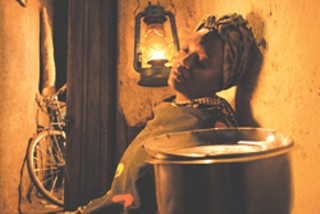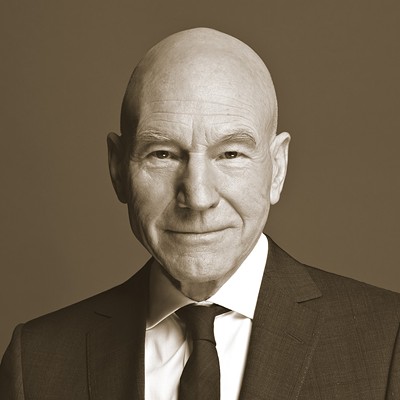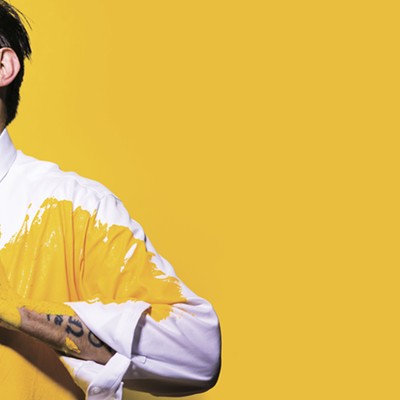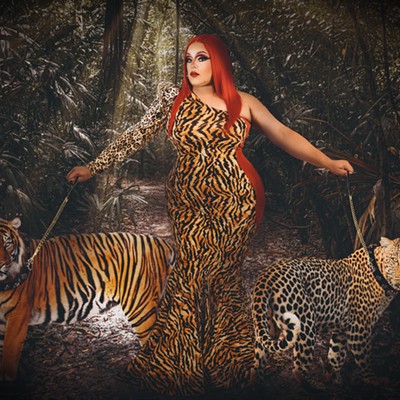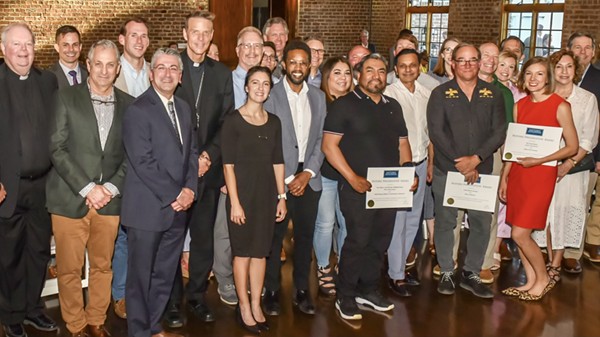DESPITE SEEMINGLY having a leg up on other Festival student entries, R.L. Hooker —who not long ago had a high position with legendary producer Harvey Weinstein — decided to go to film school.
The University of Southern California grad student chose as his thesis project a 15-minute adaptation of the short story “The Knife Grinder’s Tale,” by well-regarded Kenyan author Yvonne Adhiambo Owuor.
Continuing his apparent pattern of doing things the hard way, Hooker also insisted on making the short on location in Kenya — specifically the Kibera area, the second-largest slum in the world — where the story is set.
Currently Hooker’s short the The Knife Grinder’s Tale is on the festival circuit, including Austin, Telluride, Denver, and now Savannah. We spoke to Hooker last week.
Give us a quick synopsis of your original source material.
R. L. Hooker: It’s about a father and his journey from a village outside of Nairobi to the slums outside of the city, a place called Kibera, to understand why his son was pointlessly murdered. He’s on a journey to find out where his son was living and working so he could be at the moment.
So this is not a child, but a young man.
R. L. Hooker: Teens. Thirteen-or-fourteen years old. Yeah, people start working at a very young age there.
Few young filmmakers adapt works to the screen. Most want to start from scratch. Why did you decide to go with a story that was already written?
R. L. Hooker: I read the story and I loved it. I pictured it in my mind as a short film and I didn’t want to do the typical film-school film. I wanted to do something a bit different. So I sent out to find a property, a piece of literature, to take me to a place I couldn’t get to myself. I didn’t want to be the Western writer coming in and writing something that I don’t know and force it. I wanted to find proven material that’s already out there, that people have already read and loved.
And then I read the story, and it was so tragic and beautifully written. I read a lot of short stories, but none of them touched me in the way this one did.
So I tracked the writer down. She was giving a speech at Williams College in Massachusetts, she was in from Kenya. I called all the hotels in the town and faxed her a letter, the bellboy stuck it under her door. And she called me and she said, “Oh, my God, here’s the story, do you really want it? Go for it.”
Did you consider that turn of events to almost be a sign that this project was meant to be?
R. L. Hooker: Absolutely! I have a domino theory about this film. It takes one domino after the other to fall in order to get this made, and she was our first domino. Because of this story and how well Yvonne is known in Kenya, once I got to Nairobi every door was open to me.
I had a fairy godmother, Sheila Peevers from Sound+Pictures, she donated a camera package. That’s a lot of money, to have a Super 16 camera package and all the lenses because everybody really believed in the film. They knew I wasn’t some huckster trying to make a quick buck.
This was shot on location in Kenya.
R. L. Hooker: I was in Kenya for three months. The moment I landed I started basically searching for a Kenyan producer, and I found a wonderful, amazing producer, Chiara Paglieri. She knew everybody and she put all the components together. It was because of her that we made this film. If it was just the American producer and me, there’s no way we could have gotten it done.
Kibera is the largest slum in eastern Africa. There are lots and lots of challenges to film there in the Rift Valley. We were arrested at one point by the secret police because we captured on film an army barracks, and surprise, surprise, that’s against the law.
Did you have problems finding a steady electrical supply?
R. L. Hooker: Kenya has a small film community, but they’re fantastic. So we were able to get a big generator. It was kind of a bear to drive that through Kibera.
But we did win the Fuji grant [the 2006 Fuji Film USA Film Grant], so we had plenty of film. Which was good, because we couldn’t go back to Kenya and do pickups if we didn’t like what we saw when we got back.
Tell us about casting the film and the challenges there. For example, was there a language barrier?
R. L. Hooker: There’s not much of a language barrier, because pretty much everybody speaks English. Kenya was once a British colony. Chiara and our other producer Gregg Helvey put out flyers and used word of mouth and started setting up meetings and casting local actors, mostly ones active in the theatre community, commercials, and radio.
They’re very open, lovely people. Mumbi Kaigwa, our lead actress, is one of the most known actresses in Nairobi. She was just here at Actors Lab in Sundance.
All that effort for a 15-minute film. How in the world did you finance this?
R. L. Hooker: Student loans. Family and friends. I am in debt up to my eyeballs, with half the budget. The other half is family and friends. I sent out letters to every single person I’ve ever come across (laughs). I was fortunate to get quite a bit of money from family and friends. One friend and his family really worked out for us. And I thank them all the time (laughs).
In future projects will you do similar types of material?
R. L. Hooker: I tend to lean toward the more dramatic. I don’t think comedy’s in my future. Of course there’s always comedy within the dramatic. I’m in the middle of it now, I’m currently writing a feature. Again, that’s another drama. But these are the kinds of films I like to make. 

